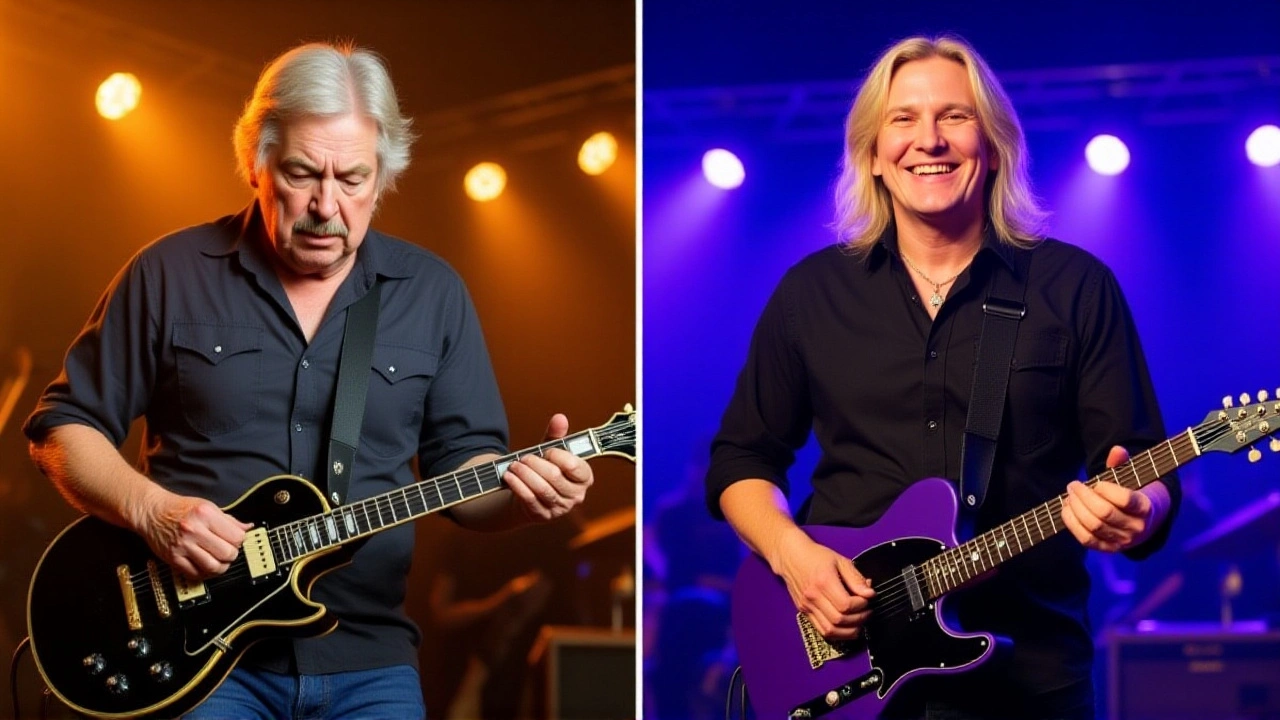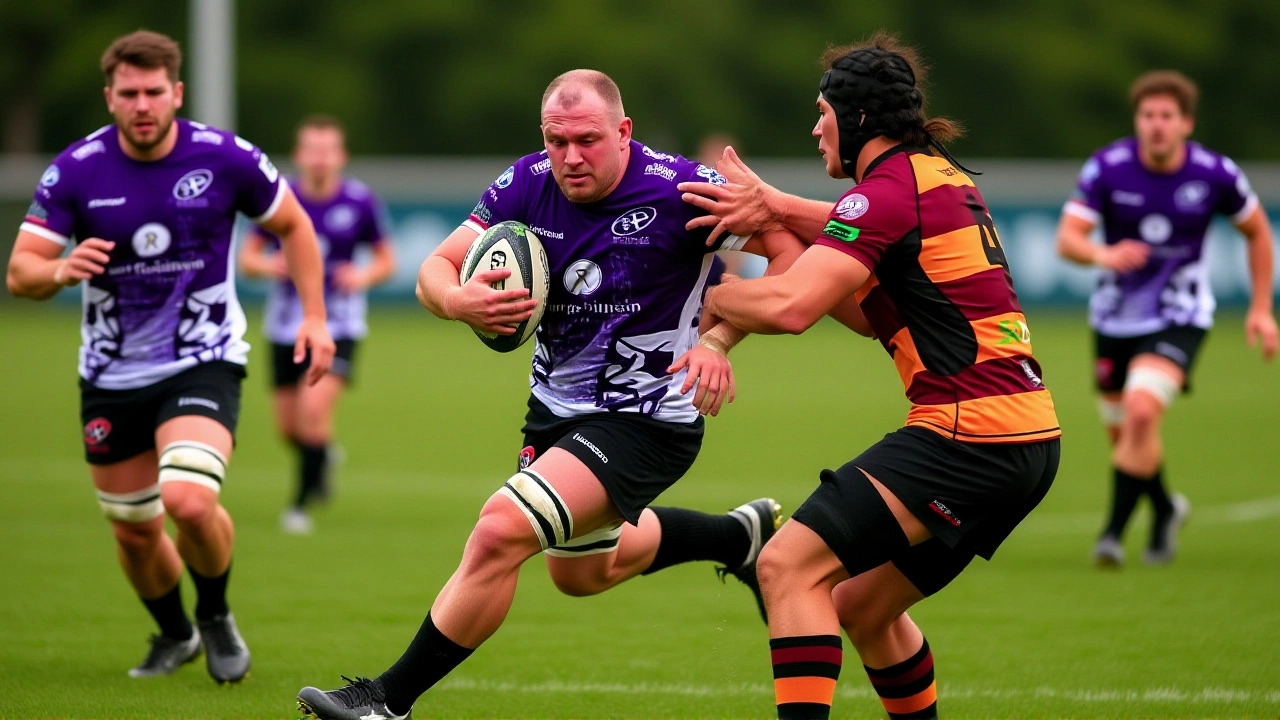Joe Walsh’s Ice Pick Amp Shocked Session Guitarist Tom Bukovac — Here’s Why

When Joe Walsh plugged in an amp that sounded like an ice pick to Tom Bukovac, the Nashville session legend didn’t walk away confused — he questioned his own ears. The moment happened during weeks of rehearsals in early 2025 for the Eagles’ support tour for Tom Petty and the Heartbreakers, where Bukovac, a veteran of over 1,500 recordings, was serving as Walsh’s second guitarist. What followed wasn’t just a gear discussion — it was a revelation about how sound works in massive venues, and why one man’s "terrible" tone is another’s sonic holy grail.
"It Sounds Terrible to Me" — A Session Guitarist’s Wake-Up Call
Bukovac described the scene to fellow guitarist Dan Huff in an interview published by Guitar World on October 24, 2025. "They kept bringing in pallets of amps for Joe to try, two at a time," Bukovac recalled. "Hundreds of amps on a conveyor belt coming in from I don’t know where." The sheer volume was surreal — but the moment that changed everything came when a new pair arrived. Walsh played a few chords through one of them. Bukovac winced. "It sounded literally like a fucking ice pick," he said. "So thin and bright. I couldn’t believe it. I thought he’d toss it aside." Instead, Walsh grinned and said, "Pretty awesome." "Is it?" Bukovac thought. "Maybe I’m the asshole here." That internal crisis led to a deeper realization. Later, Bukovac’s own tech played his rig — the one he’d spent years fine-tuning for clarity and warmth. "It sounded like [makes muffled noise]," Bukovac said. "That’s when it hit me: there’s no limit to how much high-end you can have in an arena."Why Joe Walsh Needs an Ice Pick
This isn’t about preference. It’s about physics. In a 20,000-seat arena, low mids and warmth get swallowed. Bass drums, crowd noise, PA systems — they all compete for space. What cuts through? High frequencies. The kind that feel like needles in your ears. Walsh, now 77, has spent decades learning how to make his guitar audible — not just heard — over the roar of a packed stadium. His tone isn’t about vintage warmth or bluesy grit. It’s about presence. About being the one thing that doesn’t disappear. An anonymous post on 501chorusecho.com in November 2025 backed this up: "I have personally witnessed him play through literally 500 different amps..." That’s not eccentricity. It’s engineering. Walsh isn’t chasing a sound — he’s hunting for the one amp that survives the chaos of a live arena. And sometimes, that amp sounds broken to everyone else.
A New Guitarist, A New Chapter for the Eagles
While Bukovac was learning the hard way about high-end clarity, the Eagles were making their own change. In January 2025, Steuart Smith, who’d been with the band since 2001, stepped down after 24 years due to undisclosed health issues. His departure marked the end of an era — Smith had played on every studio album since Long Road Out of Eden and toured relentlessly with the group. In his place came Chris Holt, a relatively unknown guitarist whose background remains unpublicized. Holt’s arrival signals more than a personnel swap. It’s a shift in the band’s sonic identity. With Walsh’s tone becoming even more extreme — and the band’s live sound evolving toward razor-sharp clarity — Holt’s role isn’t to replicate Smith’s style. It’s to adapt.What This Means for Live Sound
Bukovac’s story isn’t just about Joe Walsh. It’s about how the rules of guitar tone are being rewritten for modern arenas. For years, guitarists chased the "perfect" amp — the one that sounded great in a studio or small club. But in today’s massive venues, that ideal doesn’t exist. What matters is survivability. Walsh’s approach — testing hundreds of amps, rejecting warmth, embracing piercing highs — is becoming a blueprint. "I used to think tone was about feel," Bukovac told Huff. "Now I know it’s about survival." This philosophy is already influencing touring engineers. One anonymous sound tech told Guitar World that after the rehearsals, his team began re-voicing monitor mixes to prioritize 5kHz–8kHz ranges — the exact frequencies Walsh’s ice pick amp dominated. "We used to cut those," the tech said. "Now we boost them."
Legacy of a Tone That Defies Logic
Joe Walsh has always been a sonic maverick. From the wah-drenched solo on "Rocky Mountain Way" to the warped, feedback-laden chaos of "Life’s Been Good," he’s never played it safe. But this amp-testing saga reveals something deeper: his genius isn’t just in playing — it’s in listening differently. He hears what others miss. He trusts his ears over conventional wisdom. And in an industry obsessed with gear reviews and tone charts, that’s radical. Walsh doesn’t care if an amp sounds "good" on YouTube. He cares if it cuts through 18,000 people screaming along to "Hotel California."Frequently Asked Questions
Why did Joe Walsh test so many amps?
Walsh tested hundreds — possibly 500 — amps to find ones that could survive the sonic chaos of arena shows. In large venues, midrange frequencies get lost, so he sought extreme high-end clarity to make his guitar cut through crowd noise, drums, and PA systems. His goal wasn’t to sound "nice," but to be heard.
How did Tom Bukovac’s perspective change after this experience?
Bukovac, a seasoned session player, initially thought Walsh’s amp sounded broken. But after hearing his own rig sound muffled in comparison, he realized his studio-tuned tone was useless in large venues. He now understands that live sound engineering requires sacrificing warmth for presence — a lesson that reshaped how he sets up his gear for tours.
Who is Chris Holt, and why was he chosen to replace Steuart Smith?
Chris Holt replaced Steuart Smith, who left the Eagles in January 2025 due to health reasons. While Holt’s background is not public, his selection suggests the band wanted a guitarist adaptable to Walsh’s extreme tone and modern arena sound. Unlike Smith, who played a more traditional role, Holt likely brings a flexible, high-output style suited to the new sonic direction.
Is Joe Walsh’s amp preference common among other guitarists?
Not really. Most guitarists prioritize warmth and midrange. But a growing number of touring pros — especially those playing with big bands like the Eagles or Pearl Jam — are now experimenting with high-end boosts. Walsh’s approach is extreme, but it’s influencing sound engineers to re-evaluate monitor mixes, particularly in the 5kHz–8kHz range.
What does this say about the future of live guitar tone?
It suggests a shift away from studio-perfect tones toward survival-focused sound design. As venues grow larger and PA systems more powerful, guitarists may need to embrace brightness, bite, and even harshness to remain audible. Walsh’s ice pick amp isn’t a gimmick — it’s a preview of where live guitar is headed.
Did Joe Walsh use the same amp on the actual tour?
It’s unclear which specific amp he used live. But sources confirm he carried multiple backup units matching the same high-frequency profile. The point wasn’t the brand — it was the sonic fingerprint. He found a tone that worked, then replicated it across several amps to ensure consistency night after night.

